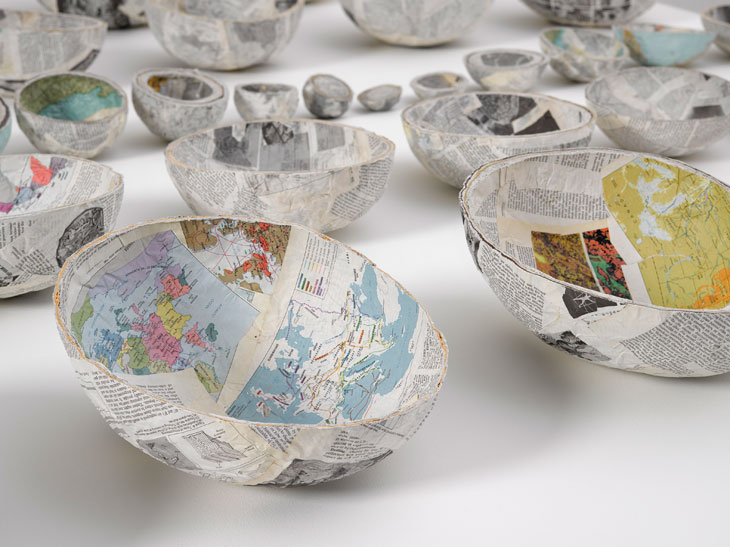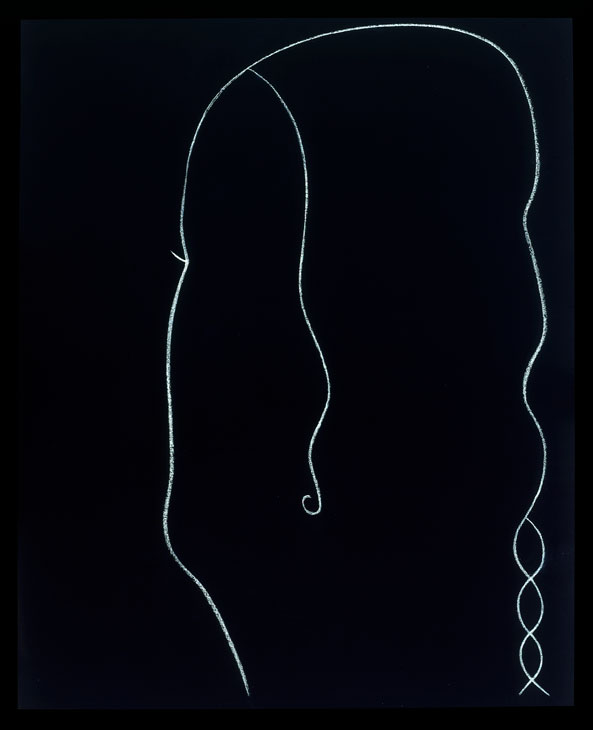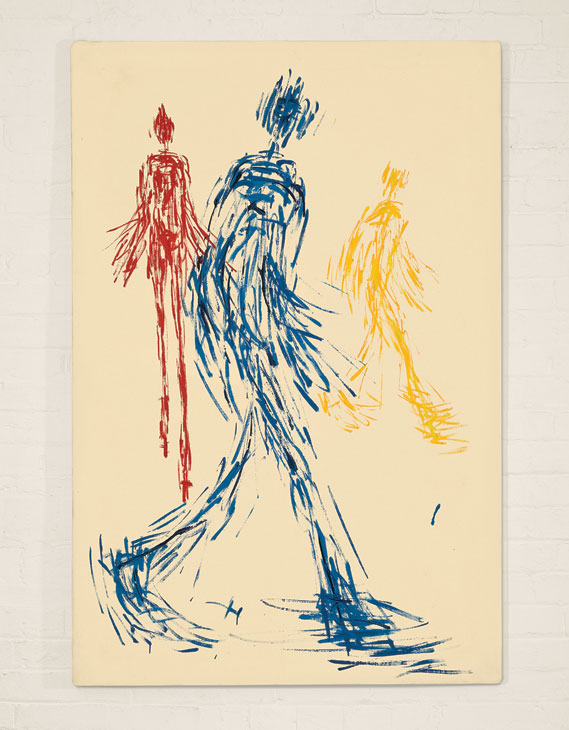With hundreds of exhibitions and events vying for your attention in London during Frieze week, Apollo’s editors pick out the shows they don’t want to miss.
‘Damián Ortega: Play Time’ at White Cube Bermondsey (27 September–12 November)
A careful balance of wit, analysis, and visual interest distinguishes Damián Ortega’s work, and the material in this exhibition should be no exception. In one experiment, the Mexican artist has taken apart a wrist watch to create a set of three sculptures (Construction time, History of time, and Deconstructing time). In another, he has reconstituted an old version of the Encyclopaedia Britannica to focus attention on its physical rather than intellectual content. ‘Play Time’ is an apt title for show that tinkers so happily with familiar constructions, games, and systems of measurement. Watch out for Ortega’s series of sculptures in clay, a material the artist took up in earnest while in Edinburgh last year.

Encyclopedic Geodes (2017), Damián Ortega. © Damián Ortega. Photo © White Cube (Ben Westoby)
Gino De Dominicis at Luxembourg & Dayan (4 October–8 December)
When the death of Gino De Dominicis was announced in 1998, many people assumed it was a hoax: after all, the Italian artist had posted a similar, fictitious notice as far back as 1969 as part of an artwork. Twenty years on, his work is still surrounded by a sense of mystery, enhanced by – in the UK at least – his relative obscurity. De Dominicis did not subscribe to any of Italy’s post-war avant-gardes, although his eccentric experiments reflected and informed conceptualism. He drew on the mythology and superstitions of ancient cultures for inspiration, and favoured painting, drawing and sculpture, which he argued were ‘not traditional but original forms of expression, [and] thus also belong to the future’. This presentation of works from the collection of his friend Guntis Brands is a rare chance to see De Dominicis’s deceptively simple portraits, the sinuous, semi-abstract lines of which are disrupted by smaller, more figurative and allusive details.

Senza Titolo (1986), Gino de Dominicis. © Estate of the artist/Archivio Gino De Dominicis, Foligno, Italy. DACS 2017
‘William Turnbull: New Worlds. Words. Signs’ at Offer Waterman (29 September–3 November)
A stalwart of British post-war art, William Turnbull enrolled to study painting at the Slade in 1945 before switching to the sculpture department and briefly decamping to Paris. On his return, he emerged as a key member of the avant-garde in London, where he shared a studio with Eduardo Paolozzi and took an active role in the Independent Group (IG), which first convened in 1952–53. This exhibition is a good opportunity to explore the breadth and variety of his art, from colourful, scribbly works on paper (some of which were only recently discovered at the artist’s former home in Camden Square), to his more familiar, hefty sculptures in bronze. Don’t miss his large-scale painting Walking Figures (1955), which is on public display for the first time.

Walking Figures (1952), William Turnbull
‘Tim Head: Beautiful Weapons’ at Parafin (28 September–18 November)
In the late 1980s, the British artist Tim Head turned his attention to the modest patterns and textures of mass-produced packaging items. By enlarging these patterns, painting them in colourful acrylic and presenting them in the gallery, he found a way to draw attention not just to the curious ways in which we decorate everyday life, but also to how accustomed we are to overlooking them. Some of these works are to be presented at Parafin this autumn alongside Head’s most recent creations: digital prints that the artist describes as ‘fabricated layers of weightless abstraction fused together with chilled precision’. Many artists today tackle the subject of the screen, and the insidious effect digital imagery is having on our understanding of the world. This is an interesting opportunity to compare how one artist has watched and responded to the encroachment of technology and mass design within society at two very different moments in modern history.

Perfect World (1990), Tim Head. © Tim Head 2017. Courtesy Parafin, London













![Masterpiece [Re]discovery 2022. Photo: Ben Fisher Photography, courtesy of Masterpiece London](http://zephr.apollo-magazine.com/wp-content/uploads/2022/07/MPL2022_4263.jpg)
‘Like landscape, his objects seem to breathe’: Gordon Baldwin (1932–2025)